Tools \ SLURP
Processes a VHR image and computes a simple land-use mask (water, low/high vegetation, bare ground, buildings)
Source codeMaturity : Stable | Categories : Processing Chains (pipelines) | License : | Producer : CNES
Overview
SLURP : Smart Land Use Reconstruction Pipeline
SLURP is your companion to compute a simple land-use/land-cover mask from VHR images. It proposes different few or unsupervised learning algorithms that produce one-versus-all masks (water, vegetation, shadow, urban). Then a final algorithm stacks them all together and regularize them to obtain into a single multiclass mask.
SLURP uses some global data, such as Global Surface Water (Pekel) for water detection or World Settlement Footprint (WSF) for building detection.
Data preparation can be achieved with Orfeo ToolBox or other tools, in order to bring all necessary data in the same projection. You can either build your mask step by step, or use a batch script to launch and build the final mask automatically.
| VHR image with 4 bands (R/G/B/NIR) | Learn 'Pekel' water occurrence and predict water mask | Use an unsupervised clustering algorithm to detect low/high vegetation and bare ground | Detect large shadows (but avoid water confusion) | Learn 'WSF" urban mask and compute building probability | Stack and regularize building and vegetated areas contours |
|---|---|---|---|---|---|
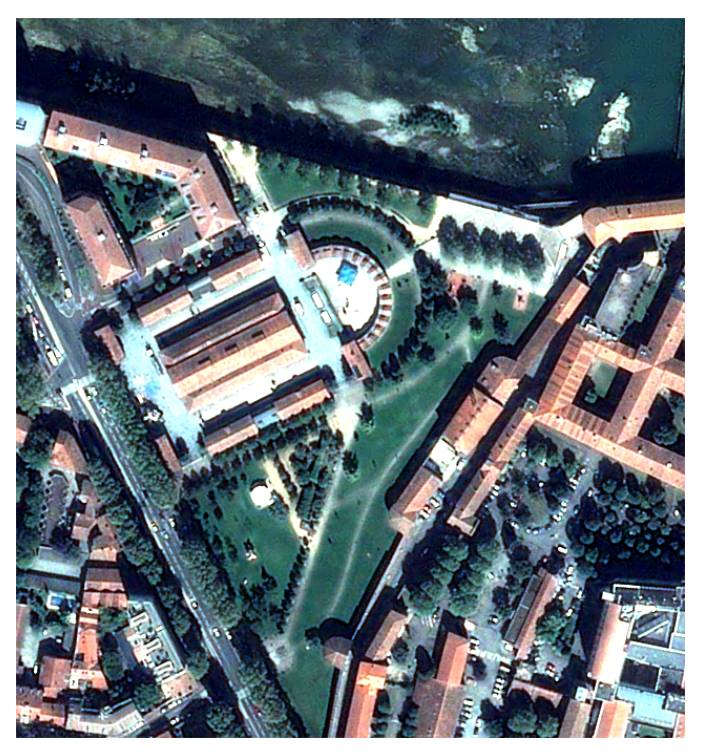 |
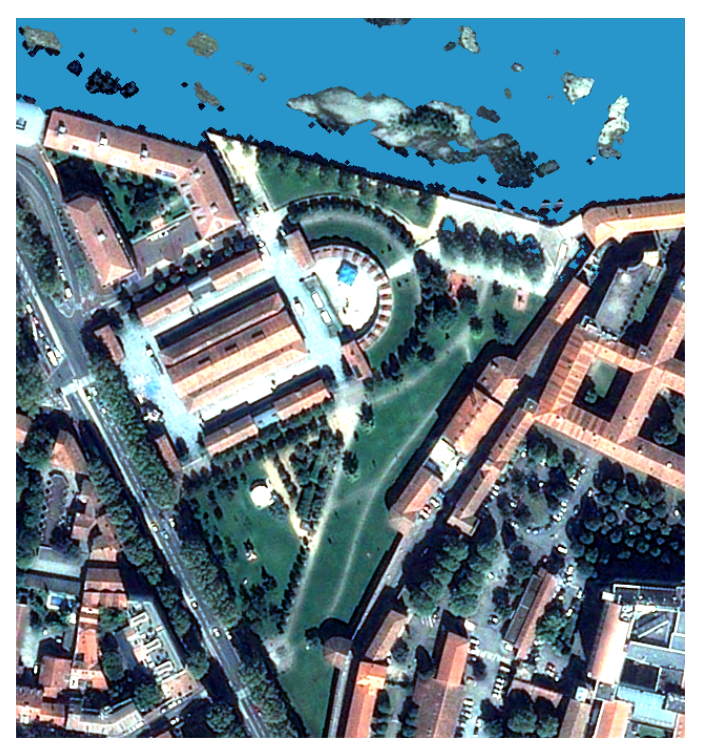 |
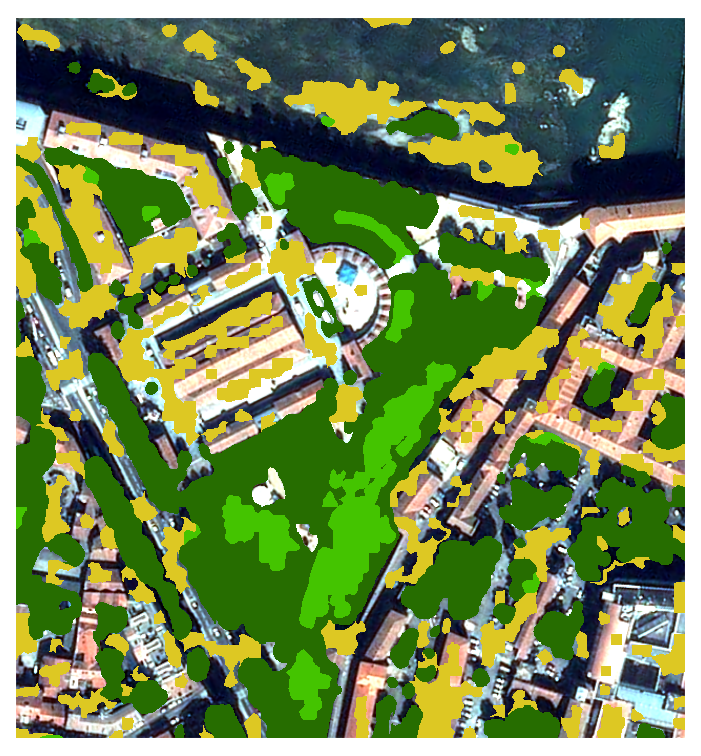 |
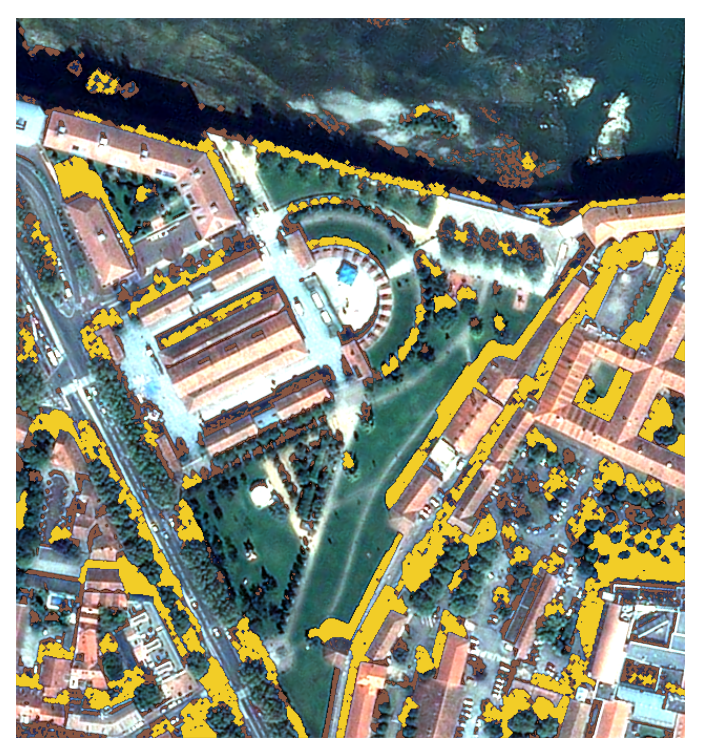 |
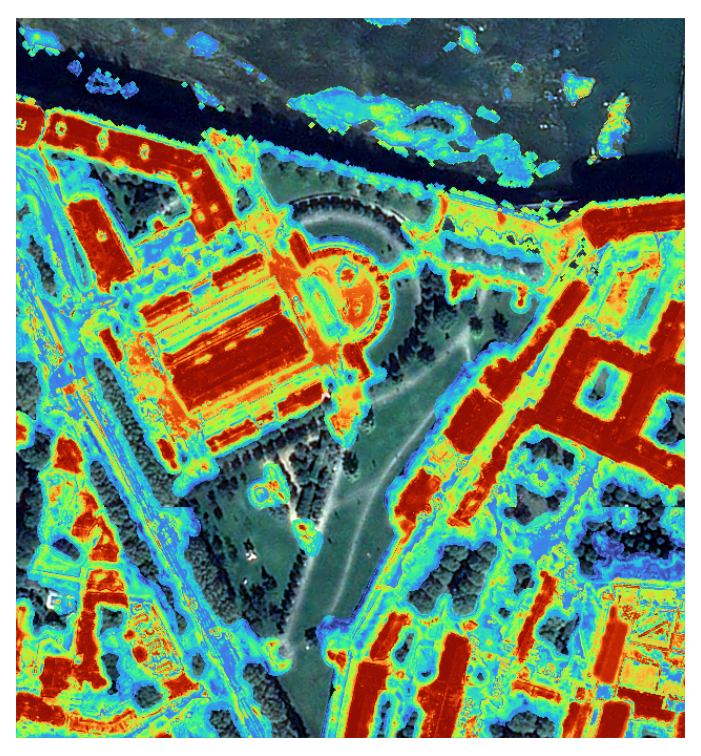 |
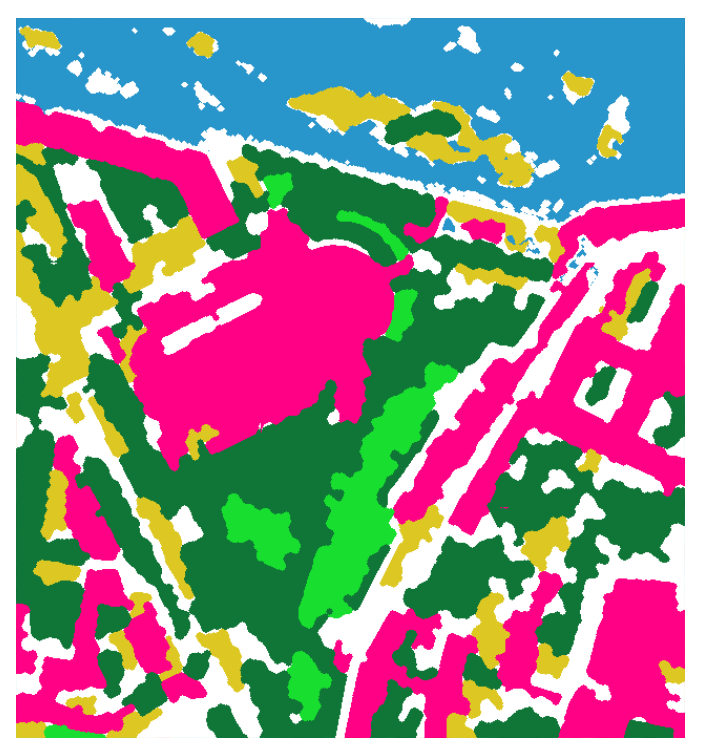 |
Tutorials
There is no available tutorial for this tool.
